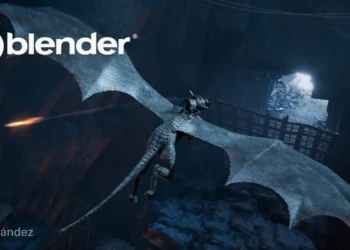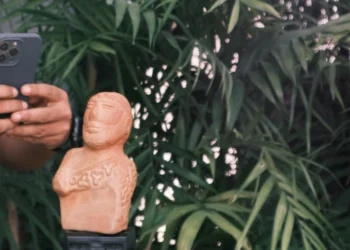Quadspinner has announced that Gaea is now out of its early-access phase and officially released. If you’ve yet to hear about Gaea, in a nutshell, it’s a promising looking new standalone landscape modelling tool that combines procedural heightmap creation techniques with artist directed erosion, akin to sculpting with the natural elements. Some of the highlights include:
- A hybrid layer based or node based approach combined with sculpting to provide several options to artists to choose the way they’d prefer to work.
- Several primitive that act as starting points, including mountains, dunes, plates, faults, lakes craters perlin noise, line noise, slope noise and more.
- The ability to import a 3D object and have Gaea convert it to a heightfield.
- Advanced Hydraulic Erosion algorithms.
- Debris nodes to add rocks and other objects using physics assisted scattering.
- Physically accurate snow that can adhere to a local mass of a snow bank, flow down slopes as it melts, fall off of particular angles and more.
- Data maps including deposits wetness, velocity and flow and Biome maps that use rainfall, moisture, and altitude to create different ecosystems. These can be used as masks for sophisticated terrain colouring or even with 3rd party scattering tools (like Forest Pack) to populate the landscape with scattered objects.
- Fast colour prototyping using built-in or custom designed gradients. Colours can be extracted from a source photograph and data maps can be used to create more sophisticated colour maps that react to the features of the landscape.
- The ability to create non-uniform stratification with plate-breakage, terrain folding and rifts.
- Scriptable and open format.
- Realistic sediment accumulation.
- Several prefabricated primitives that can be used as a starting point for custom designs.
- Several noise types, refined for use in landscape modelling.
- Real-time viewports with support for lighting, atmosphere, and water, including material presets for rapid visualisation.
- A build manager for managing which nodes should export to a file.
- Multiple export options including 16bit EXR, RAW, meshes or points clouds. Multiple LODs can also be exported
A license of Gaea also includes Erosion Studio, a separate standalone application that includes Directed Erosion tools that allows the user to art-direct environment creation in a way that is much easier that using purely procedural techniques. The Directed Erosion tools can be used in one of three modes. Normal mode behaves as you would expect in nature, erosion takes material away from the terrain and deposits it elsewhere. The second mode, Infinite flow, deposits debris on the terrain but without removing it from anywhere. Finally, Erosive mode does the opposite, removing material without redepositing it. Several directed erosion tools are available, including:
- LandBreaker, a general all-purpose erosive breakdown.
- Flowlines to create breaker style broad flow lines.
- Soil deposit tool.
- WideFlow to create long wide flows.
- Carver for strong rock carving.
- Gullies to create gentle flowing gullies.
- Pockmarks for small impact holes. Useful for detailing.
- Rocks to create rock flows.
- RoughFlow for chaotic soil/rock flows.
- Roughness for detailing and roughening surfaces.
- Scratch for creating superficial scratches.
- Sedimentary for strong soil flows.
Perpetual licenses of Gaea’s cost $99 for the indie license with a 4K render limit, $199 for the Professional license with no render limit, and $299 for an Enterprise license with no render limit, scripting access, automation, distributed builds plus offline and floating licenses. All licenses are perpetual.
A completely free Community version is also available that has a 1K render cap and limited Erosion Studio tools.
Find out more on the Quadspinner website and the Gaea blog.







